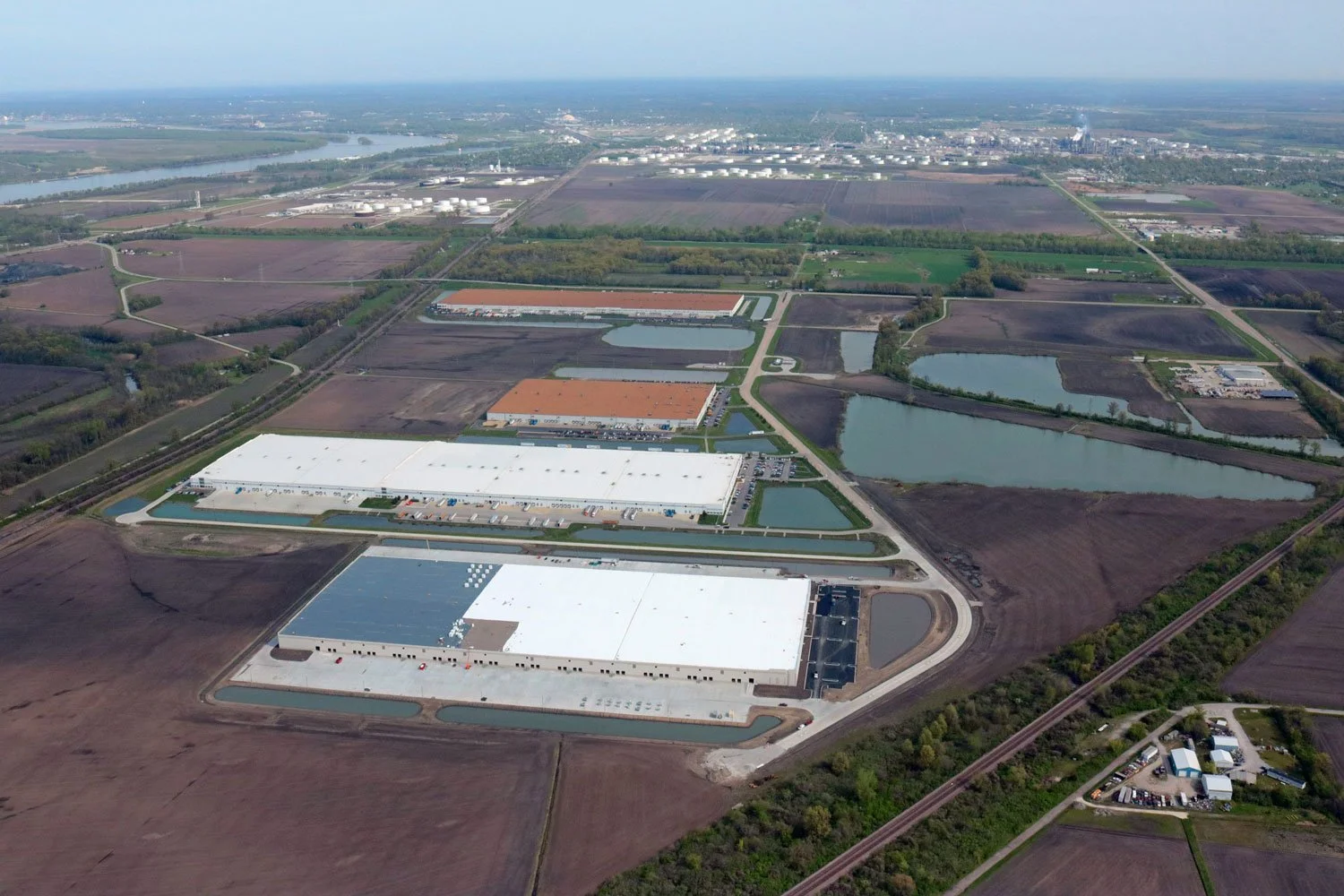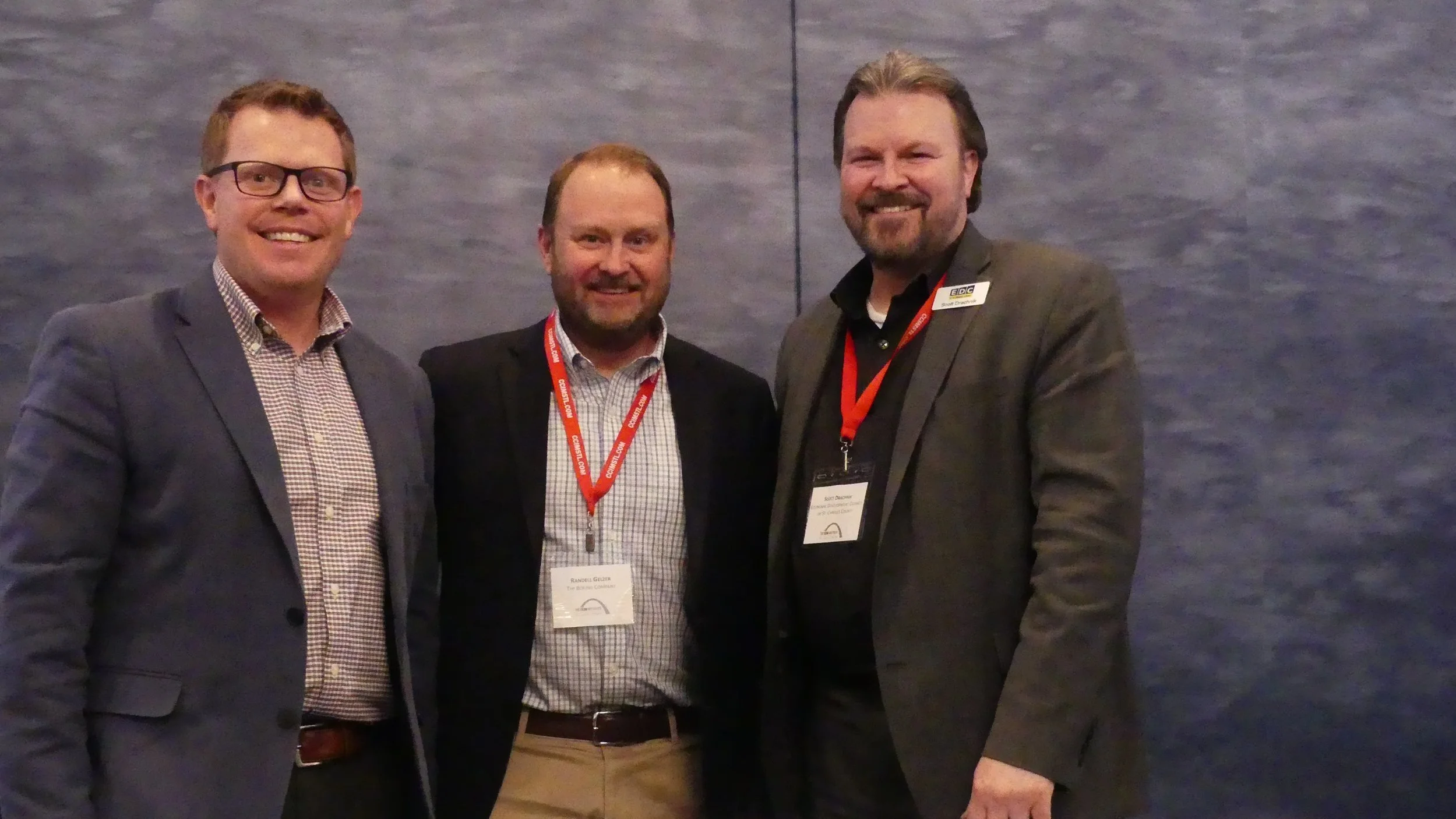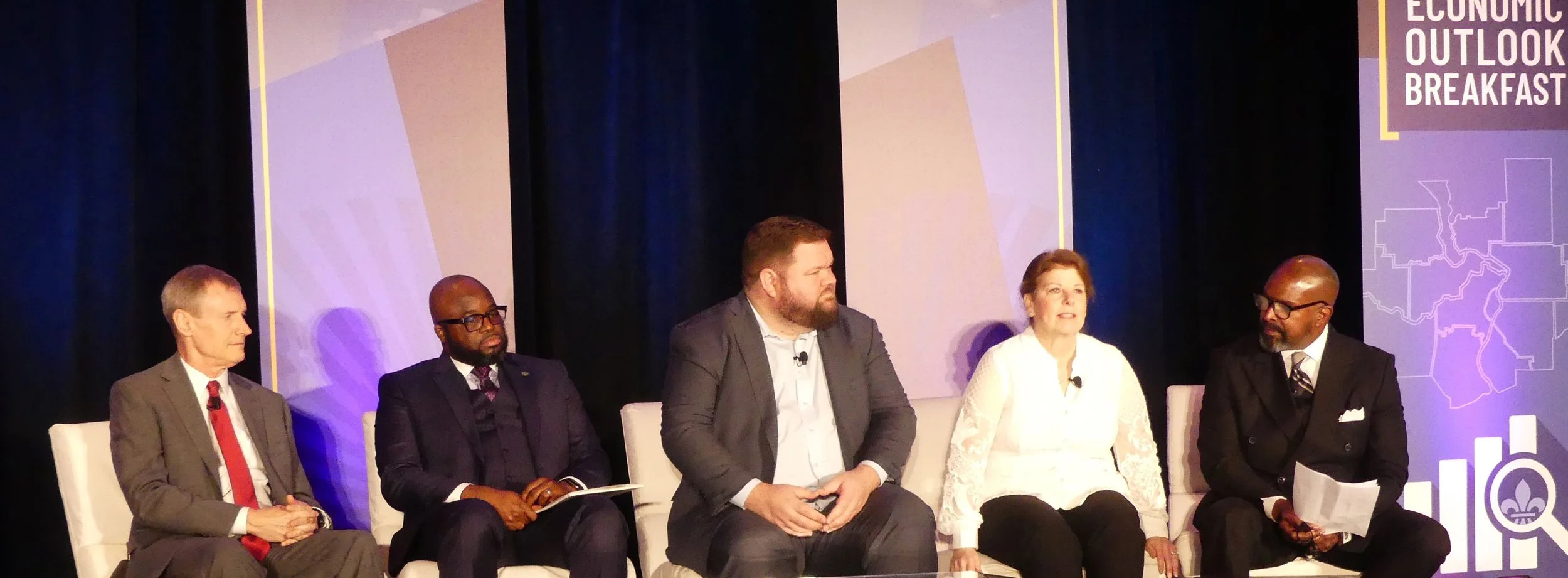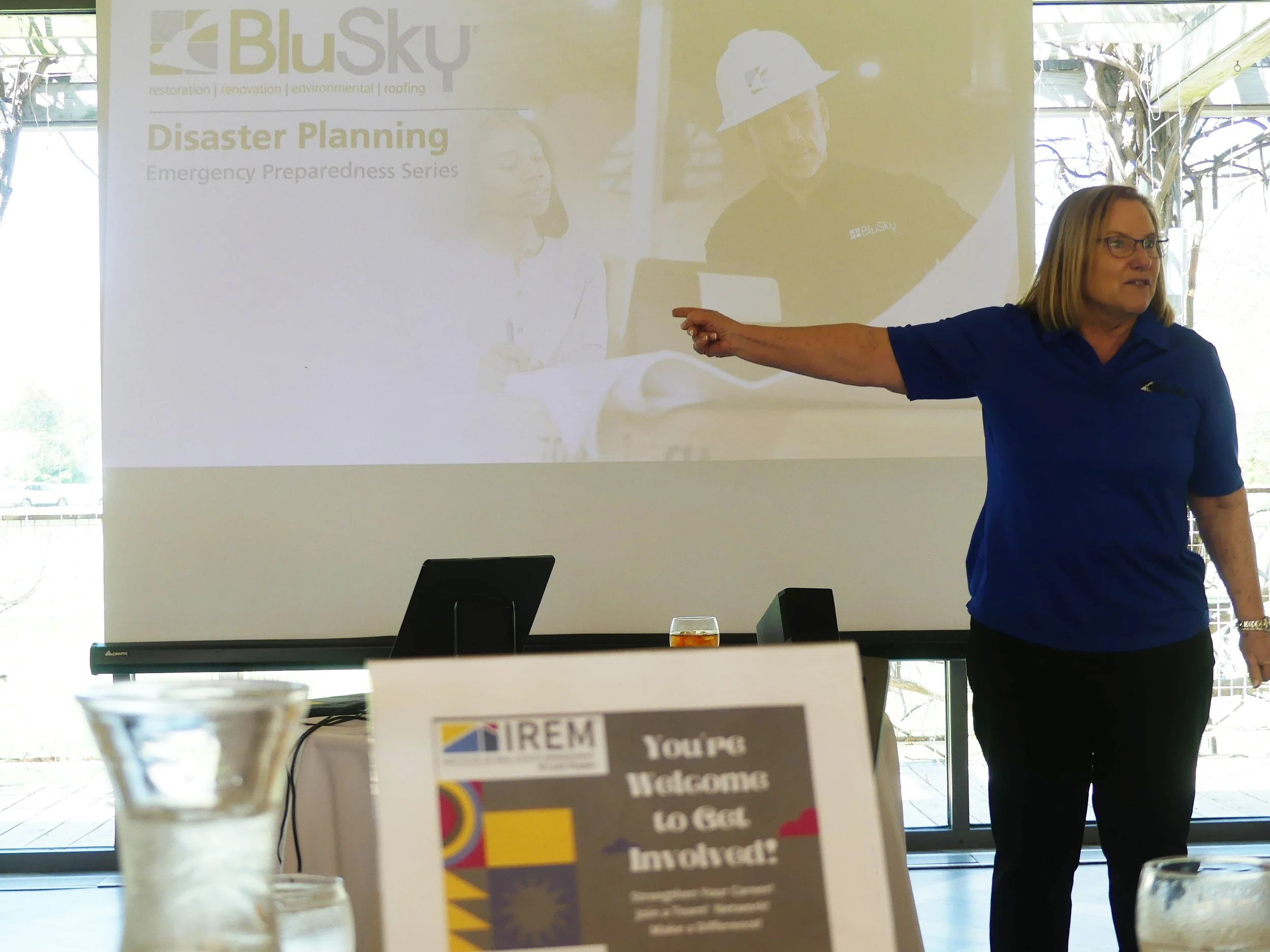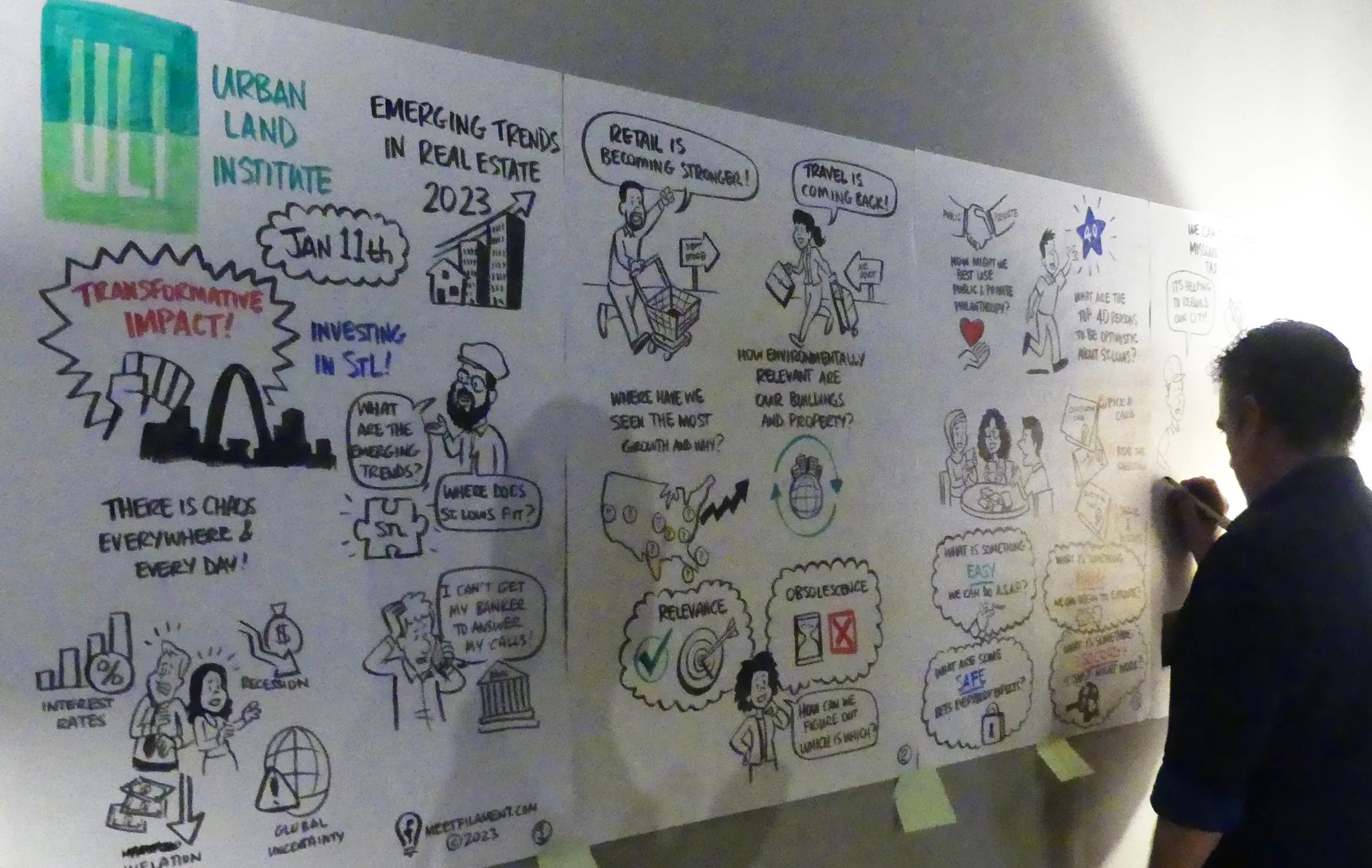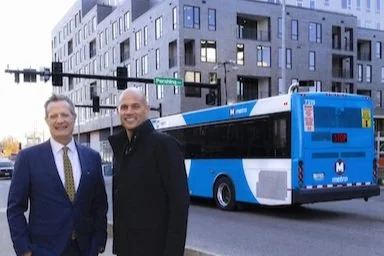Header image: A rendering of a new apartment building at 21st St. and Washington Ave. in Downtown West near CityPark. Image courtesy of AHM Group
Kaemmerlen Electric marks 100 years of innovation and growth
Kaemmerlen Electric Co. was founded in 1924. It was born from the growing need for appliance repairs in St. Louis during the early 1900s as electrical infrastructure developed. Initially focused on small appliance repairs, the company serviced 50,000 plug-in clocks, toasters, and radios annually, becoming the most recognized small appliance repair shop in St. Louis. Alongside these services, Kaemmerlen established itself as a major electrical contractor that handled lighting and fan repairs in downtown offices.
The company was founded by Thibault Casper (TC) Kaemmerlen and his foreman, Gil Kramer, who each contributed $150 to start the business at 22 North 2nd St. Kaemmerlen, originally from Guadalajara, Mexico, moved to Missouri to escape political turmoil in his home country. After studying at Ranken Technical College, he worked at Frank Adams Electric Company, where he met Kramer.
Kaemmerlen’s shift from a small repair shop to a more prominent electrical contractor began in 1927 when the company secured its first major contract to wire Gilster Milling in Steeleville, Mo. Despite the challenges of the Great Depression, the company continued to grow, performing warranty work for department stores while expanding into electrical contracting. In 1937, Kaemmerlen bought out Kramer and moved to a larger location on Lafayette Ave.
Post-World War II, Kaemmerlen relocated to its current address at 2728 Locust and benefited from the post-war economic boom. It became a signatory contractor with IBEW Local 1 and co-founded the National Appliance Repair Association. In the 1950s, the company was repairing 25,000 appliances annually, which doubled over the next decade. However, by the 1970s, the company shifted away from appliance repair as consumers began replacing appliances instead of repairing them.
Above: The current Kaemmerlen Electric leadership team from left to right; Bob Kaemmerlen Jr.,Tracey Trembath, principal, and BrianTrembath, chief financial officer. Photo courtesy of Kaemmerlen Electric
Today, Kaemmerlen Electric has diversified its services, focusing on commercial, retail, and institutional projects. Its work spans educational institutions, healthcare facilities, retailers, and businesses like Nike, Mastercard, and World Wide Technologies. With 95% of its work from repeat clients, Kaemmerlen continues to evolve, offering expertise in low-voltage projects, data centers, and audio/visual technology. The company celebrated its 100th anniversary in October 2024.
Header image: Founder Thibault Casper (TC) Kaemmerlen flanked by two employees circa 1946. Image courtesy of Kaemmerlen Electric Co.
Area projects are taking the St. Louis region to new heights
Speakeasy-style bar tunnels beneath City Foundry STL
Gateway South project aims to position St. Louis as a national hub
Why St. Louis? CCIM-STL panel illuminates appeal of Gateway to the West
The St. Louis region is in good shape and offers worthwhile opportunities for commercial real estate, according to speakers at a February 13 CCIM-STL meeting at the Meridien Hotel about “Why St. Louis?”
Jim Fredericks, partner in luncheon sponsor Armstrong Teasdale, set the tone for the program by saying, “I believe in St. Louis, and I believe in what we can do for St. Louis.”
Doug Rasmussen, founder and CEO of Steadfast City Economic & Community Partners, noted that his focus on site selection benefits from the interconnections among all 15 St. Louis counties, and that assumptions about the airport are not a big deal: “The lack of an airport hub isn’t that important,” he said. “We have parity in travel prices,” so business travelers have fewer concerns when planning trips.
The St. Louis region can “line up well in risk management,” Rasmussen said. “We can serve the globe from one location. We have diverse options for the supply chain. We have a reliable infrastructure, including weather. We have an industrial heritage and sites that can be redeveloped. We can provide a talent supply chain from the shop floor to the C-suite.”
The region does need more tech workers and residents in general, he noted.
“The challenge for real estate professionals is to think of St. Louis as unique and focus on what’s in our own backyard for all aspects of what a company might need,” Rasmussen said.
For Maggie Kost, chief attraction officer at Greater St. Louis, Inc., promoting St. Louis to potential new businesses is “truly a team sport.”
Her organization primarily focuses on companies in advanced manufacturing (automotive, aerospace, and food and beverage), agtech, bioscience and health, digital transformation, financial and business services, and geospatial. The span of industries and occupations is “an asset for spouses when [a business owner] is relocating here,” she said.
Kost and her team present St. Louis as “a place to start up, stand out, and stay.” St. Louisans “are hard on ourselves, and we shouldn’t be,” she added.
She noted that the metro St. Louis region is ranked as number one in the Mississippi River corridor. “We are putting St. Louis on the global stage,” she said. That’s due to the area’s “transport modal hub, great culture, affordable housing and minimal commutes,” among other qualities.
Commercial real estate professionals would benefit from thinking of Greater St. Louis, Inc. as “a resource and part of your team,” Kost said.
Robert (Bob) Millstone, president and founder of the The Millstone Company, outlined the ways that the Gateway South project, a 100-acre master-planned redevelopment along the riverfront, aims to enhance St. Louis as number one in construction innovation. It will be “a walkable, mixed-use downtown focused on cross-pollination,” Millstone said, at a total estimate cost of $1.2 billion.
Phase 1 is expected to be complete in two years, with work scheduled to begin in March, Millstone said — an impressive goal. It already has $200 million in incentives and $25 million in out-of-town investments, as well as “real local manufacturing companies that will anchor the project.”
Reflecting on the history of the area, “we’re excited about the next 100 years,” Millstone said.
Kost also noted that the St. Louis area’s colleges and universities contribute substantially to the region’s appeal to new and existing businesses and nonprofit organizations as “tremendously important for filling the talent pipeline and innovating.”
Millstone added that “we also have to keep tech training in mind”; not just area universities but also institutions like Rankin Tech and the offerings of the community college system.
Kost agreed: “A lot of people don’t realize there are a lot of community college programs for retraining. It’s all set up to address (business) needs. The community colleges and Rankin understand (what companies need).”
Another key to the region’s future, according to Rasmussen, will be promoting its “cool factor — making it an area that young people want to go to (and stay in). It’s mostly a matter of making (our advantages) known.”
Immigration trends also work in favor of St. Louis, panelists agreed. “It’s very important for us that St. Louis has always been really good at welcoming immigrants,” Kost said, while Rasmussen said that “my lens as a site selector is that St. Louis is not as well-known as we could be (in this respect) — it’s important to make (us) more of a landing place for new Americans.”
The same things that attract new companies and people to the area are a factor in retaining graduates and employees, Kost said.
Millstone identified the role of commercial real estate professionals as creating jobs for the future and convincing potential new businesses and residents that “this is a good place to live, work and play.” Being “ambassadors for the region” is also a vital role for the profession.
“Projects have to integrate with what leaders and the community want,” Millstone added.
That perspective fits with plans for the Greenway project, which Kost called “incredibly important in quality of life and an asset in connectivity and bridging the divide.” It can also be promoted as a tourist attraction, Rasmussen said.
The session wrapped up with perspectives on downtown. “Downtown is incredibly important,” Kost said. “We have locations (that are ideal for) industrial reuse, office space that is very affordable compared to other areas. We’re making sure that we have the tools for redeveloping spaces (so employees will want to come back to offices).”
The answer to “Why St. Louis?” comes down to recognizing that “we’re a region and we live and die as a region,” Millstone said. “St. Louis can be a success, downtown can be a success, but we have to invest.”
St. Louis area chambers rally 600 colleagues for economic prosperity
Insights on the City of St. Louis' new building energy and performance standards
Missouri Botanical Garden visitor center achieves full-bloom transformation with recent renovation
Creating universal environments boosts morale, productivity and creativity
Disaster Planning: Essential for commercial real estate survival
SkyView Partners and Tegethoff Development team with Marriott for Oasis at Lakeport expansion
Innovation and customer experience key to St. Louis commercial real estate growth in 2023
More than 100 industry professionals attended MetroWire Media's 2023 Market Forecast Summit on March 9, 2023 at the Lodge Des Peres, which featured networking and a panel discussion with Addie Bunting from Wies Offsite as the moderator, and panelists Lauren Talley with Cobalt Construction Consulting, Tom Ray with CBRE, Tom Kaiman with Mia Rose Holdings, and Kyle Wilson with Kadean Construction. The panelists covered a range of CRE topics related to multifamily housing, office, industrial, and retail real estate.
Here are some highlights from the session:
Impact of the new Citypark Soccer Stadium
Kaiman: “It’s a great addition to the city that will spur other development in the area. Quality developments will bring people back to town. It will be an exciting place to live. The Taylor family is doing a great thing with this investment in the city.”
Talley: “It is exciting to see midtown coming to life,” said Talley. “Out-of-town developers are coming in.”
Multifamily
Kaiman: “Multifamily has been undersupplied for decades; zoning, permitting and NIMBY continue to be problematic. A lot of new product is coming online in St. Charles County.”
Wilson: “We continue to see a lot more interest in multifamily and condo properties for sale among empty nesters in Kirkwood, Webster Groves and Clayton. Small projects seem to infill well.”
Ray: “Apartments will fix downtown. The answer is more apartments. It’s more important than ever that people can live in walking distance of their offices.”
Talley: “Multifamily has exploded. The result is a flight to quality while commercial is seeing a flight to amenities.”
Office
Ray: “Downtown is seeing a nice absorption in startup and early-stage businesses looking for office space needing little improvement. Landlords are ready to deal. There’s an historic view that the prime downtown tenant is a large law firm that will stay forever, but smaller startup companies are the future. There’s a lot of leasing as companies look for smaller office space.”
Kaiman: “There’s no longer a playbook or one size fits all. We’re still trying to figure it out. The world will continue to evolve in how we work, how we live, how we play.”
Retail
Kaiman: “Development fits everywhere. It’s all about how you activate a site and bring people there. It has to be safe. Cities that keep an open mind will benefit. The economic development folks have to be out there recruiting for new businesses.”
Wilson: “Store chains are taking a new approach, adding a smoothie bar, clothing for sale, etc., to create a new experience.”
Ray: “Mixed use is a goldmine for commercial/retail. It’s completely based on walkability.”
Talley: “Mixed use is kind of the ‘new black,’ and jurisdictions are mandating it. I think it’s here to stay. We need to grow to be more welcoming to national chains.”
Cannabis
Kaiman: “It’s the best thing that ever happened to empty stores. Data also shows property values going up around dispensaries.”
Industrial
Wilson: “We’re finding more mega-sites — they seem to be bigger and bigger. Tenants who need smaller space might be left in the dust. Big is booming.”
Talley: “We have the land available (that companies need for large industrial uses). Cost increases for materials and supplies led to a pause. Products delivered to the home with continue to grow (and require large warehouse and distribution facilities). Companies are looking to automation because it offers less human error or possibilities of people getting hurt — all industries are increasing automation.”
Wilson: “Automation has much higher construction requirements, so we’ll see taller buildings. If it gets traction, it will change the way we build warehouses.”
What Clients Want
Kaiman: “Our customers are tenants, so the flight to quality is their number-one driver.”
Wilson: “Our biggest challenge is being asked for more product. The subcontractor market is overloaded — they need more workers.”
Ray: “The collective experience in the office sector is adding more amenities. A new building has to be different from the one next door. You have to figure out how to provide experiences.”
Talley: “Clients want transparency in everything — costs, where products are coming from, when items will arrive, whether prices will be the same on arrival.”
Overall, the panel was optimistic about the future of commercial real estate in St. Louis, highlighting the potential for growth and expansion across all four sectors. They emphasized the importance of providing customers with unique experiences, as well as the need for economic development teams to recruit new businesses to the area.
_____________________________________________
Cool conversions, higher purposes among emerging real estate trends
Architects provide key ingredients for restaurant success
Panelists chime in on 2023 AEC economic predictions
Unique amenities, pre-planning play key roles in mixed-use success stories
Expo at Forest Park takes transit-oriented development to next level
Area airport directors say regional collaboration is key to growth for all
Brinkmann Constructors promotes Brian Satterthwaite to CEO, Tom Oberle to president
Brinkmann Constructors has completed a leadership succession plan that promotes Brian Satterthwaite to chief executive officer (CEO), and Tom Oberle to president. Founder and former CEO, Bob Brinkmann, will remain engaged as chairman of the board for the company he launched in 1984.
Since 2010, Bob Brinkmann had served as CEO, Satterthwaite as president and Oberle as executive vice president. Now 12 years later, Brinkmann Constructors’ annual sales revenue has grown more than ten-fold, rising from $111 million to $1.3 billion.
“It is an honor to succeed Bob as CEO,” Satterthwaite said. “He has put nearly four decades of dedicated effort into building an outstanding organization while generously planning a better future for all Brinkmann employee-owners via our stock ownership plan. We’re happy to have Bob’s involvement in nurturing the culture that defines us and his service as chairman of the board. Our community will benefit from his continued civic endeavors.”
The changes complete the last step in a multi-year leadership and ownership succession plan initiated by the founder. Ownership succession was addressed with the establishment of the Brinkmann Constructors Employee Stock Ownership Plan (ESOP).
“The outstanding performance and leadership shown by Brian and Tom have proven instrumental to our growth and success,” Brinkmann said. “I am excited to have them take full leadership of Brinkmann’s strategy, direction and operations while I remain involved as chairman of the board. I am confident they will continue to nurture our culture, which focuses on the strength of our team, the creativity and knowledge of our employee-owners, and the shared passion we have for serving one another, our clients and our communities.”
To further support growth, Ted Hoog, vice president of operations, was promoted to senior vice president of corporate operations, supporting Brinkmann’s national construction operations. Matt Funk, director of preconstruction, was named corporate vice president of business development and preconstruction, adding company-wide business development responsibilities to his existing duties leading Brinkmann’s preconstruction services.
Jeff Vierling, director of field operations, was named vice president of field operations, broadening his mentoring and management responsibilities for Brinkmann’s field teams nationally. Lucas Rottler, director of preconstruction in Denver, was promoted to vice president of preconstruction in Denver, expanding the scope of his responsibilities. Nathan Wirth, senior superintendent in St. Louis, was promoted to regional director of field operations in Kansas City.
The national construction firm today stands at 350 employee-owners scanning four cities (St. Louis, Denver, Kansas City and Richmond, Va.).
Brinkmann Constructors is a national general contractor offering design/build, design/assist and construction management services to a wide variety of commercial industries, including student housing, senior living, industrial, multifamily and mixed-use, office, retail and more.
________________________________-
Editor’s note: Catch Matt Funk as a panelist in MWM’s STL Mixed-Use Summit on Nov. 30 at The Expo at Forest Park. For more information, or to register for the event, CLICK HERE.





